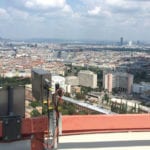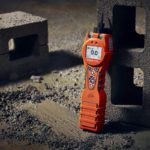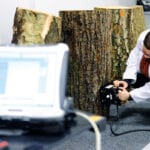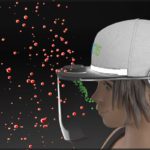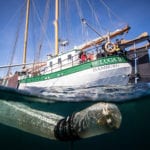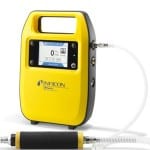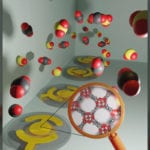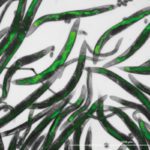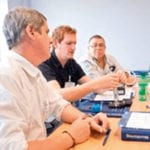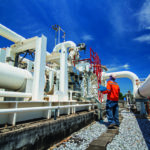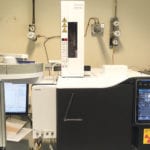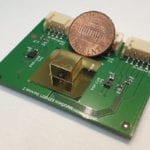Describing pollutant distribution in 3d
A team led by environmental physicist Stefan Schreier at the University of Natural Resources and Applied Life Sciences in Vienna is attempting to build up a better picture of nitrogen dioxide pollution in the city. The work includes the first attempts to describe how this pollution is distributed in the vertical axis, from street-level upwards, as well as the use of data from satellite measurements.
Sponsored Content: Danati Fire & Safety improves investigation time with Tiger VOC detector
Danati Fire and Safety is a leading investigator of fires and explosions covering Southern Africa. Their staff regularly use ION Science’s Tiger VOC detectors to help find organic chemicals that may be the source of a fire.
Data-driven revamp in Northampton
The project aims to help identify pollution hot spots caused by traffic.
A network of air quality monitors has been installed by West Northamptonshire...
Tree density research paves the way for non-destructive testing methods
University of West London (UWL) researchers say they have developed pioneering techniques to map the architecture and mass density of tree roots within the...
Case study: Detecting toxic gases at a container inspection firm
Toxic gas is said to be a threat presented by around 10% of freight containers. The problem for anyone opening or entering such containers...
Hats off to filtering headwear
A Scottish company is seeking second round funding for what it says “could be a breakthrough in wearable technology” and a potential solution to...
Connected detector
A new single-gas detection wearable from Blackline Safety is said to offer fast incident response time and a more efficient way to manage safety and compliance.
Sponsored content: Monitor air quality – without a monitor!
Being able to monitor air quality without a sensor in place seems like magic, although highly impressive, it's not quite magic. Advancements in technology...
First demonstration that forests trap airborne microplastics
A research group in Japan has demonstrated that airborne microplastics adsorb to the epicuticular wax on the surface of forest canopy leaves, and that...
3d laser maps aim to help protect coastal heritage sites in €4 million EU...
The Royal Commission on the Ancient and Historical Monuments of Wales (RCAHMW) has commissioned aerial mapping company Bluesky to capture highly accurate laser maps...
Connected gas detector offers easy set-up, maintenance and reporting
Honeywell announced a new connected gas detector (on 2 November) designed to keep industrial operations safe while making set-up, maintenance and compliance reporting faster...
Scientific microplastic survey of Scottish coastal waters confirms contamination
Microplastics found in two thirds of samples, many carrying toxic chemicals
The results from Greenpeace’s 2017 ship tour of Scotland - published on 7 March...
Detector improves reliability of gas network surveys
Said to improve the reliability of gas network surveys, the new IRwin methane leak detector and probe system employs an IR sensor, reacting quickly...
Making sense of sensor arrays
Research at Oregon State University is working towards the development of an electronic "nose" capable of monitoring air quality, detecting safety threats, and measuring gases in a patient's breath.
The worm turns for IAQ sensing?
Researchers at the University of Turku in Finland have developed a new method for measuring indoor air quality, making use of fluorescent nematodes.
Safety and efficiency through proactive action
This article contains paid for content produced in collaboration with Stonegate Instruments.
Given the stringent health and safety and environmental regulations in place, businesses are...
Air sampling one-day course
Air sampling expert SKC is offering a comprehensive one day hands-on practical training course
Making light of the matter: Thoughts on measuring methane
Gas leak measurement is germane to the realisation of goals such as the Global Methane Pledge. Doug Baer of instrumentation expert ABB offers some...
Quantifying contaminants in oil and gas for recycling
Celtic Recycling is the only firm in the UK able to produce 'good as new' sulphur hexafluoride from discarded transformers, a service supported by the use of bespoke gas chromatography equipment, as this case study explains .
First all-metamaterial optical gas sensor
The possibility of smaller, more power-efficient and simpler non-dispersive infrared (NDIR) sensors has been announced by Swiss researchers



